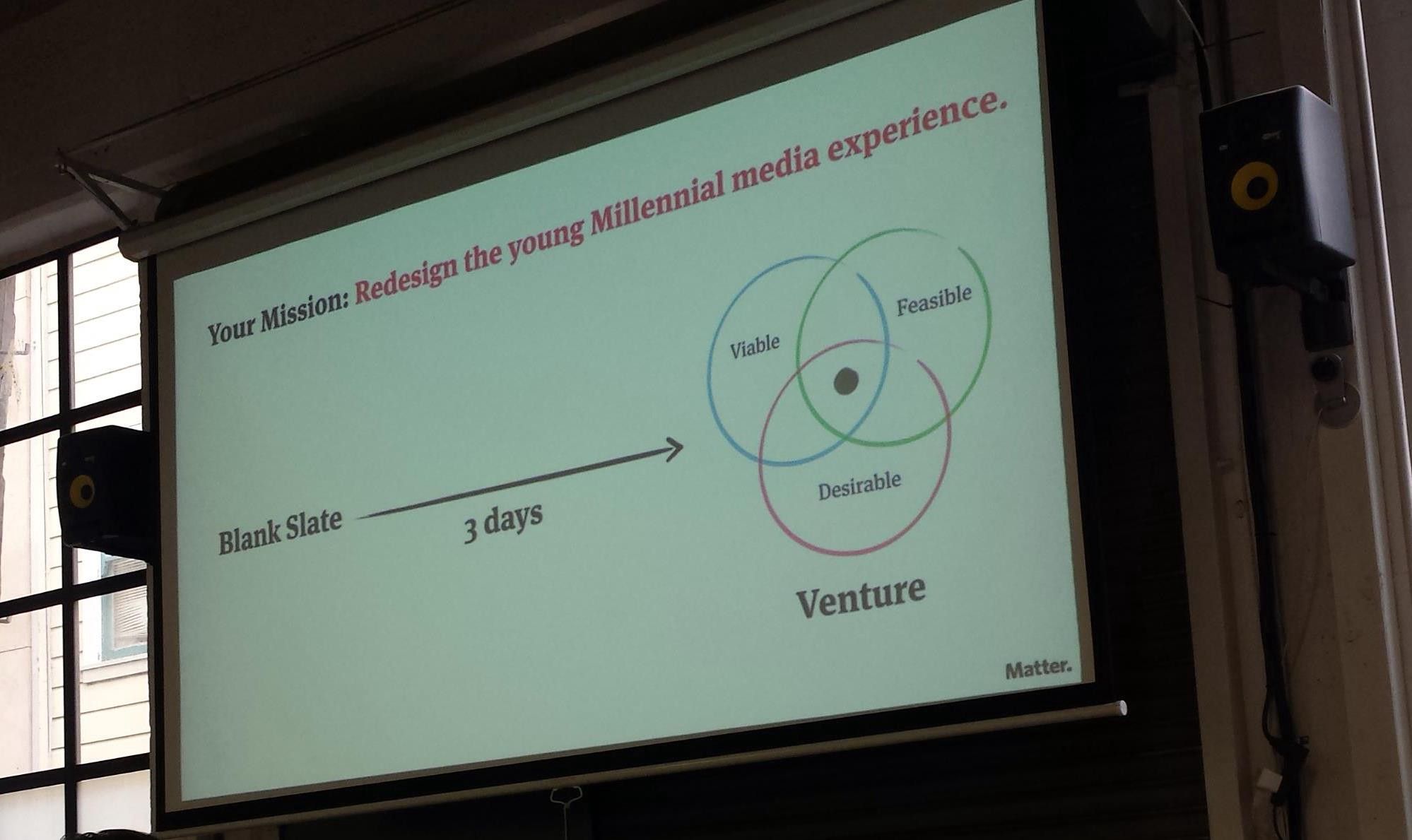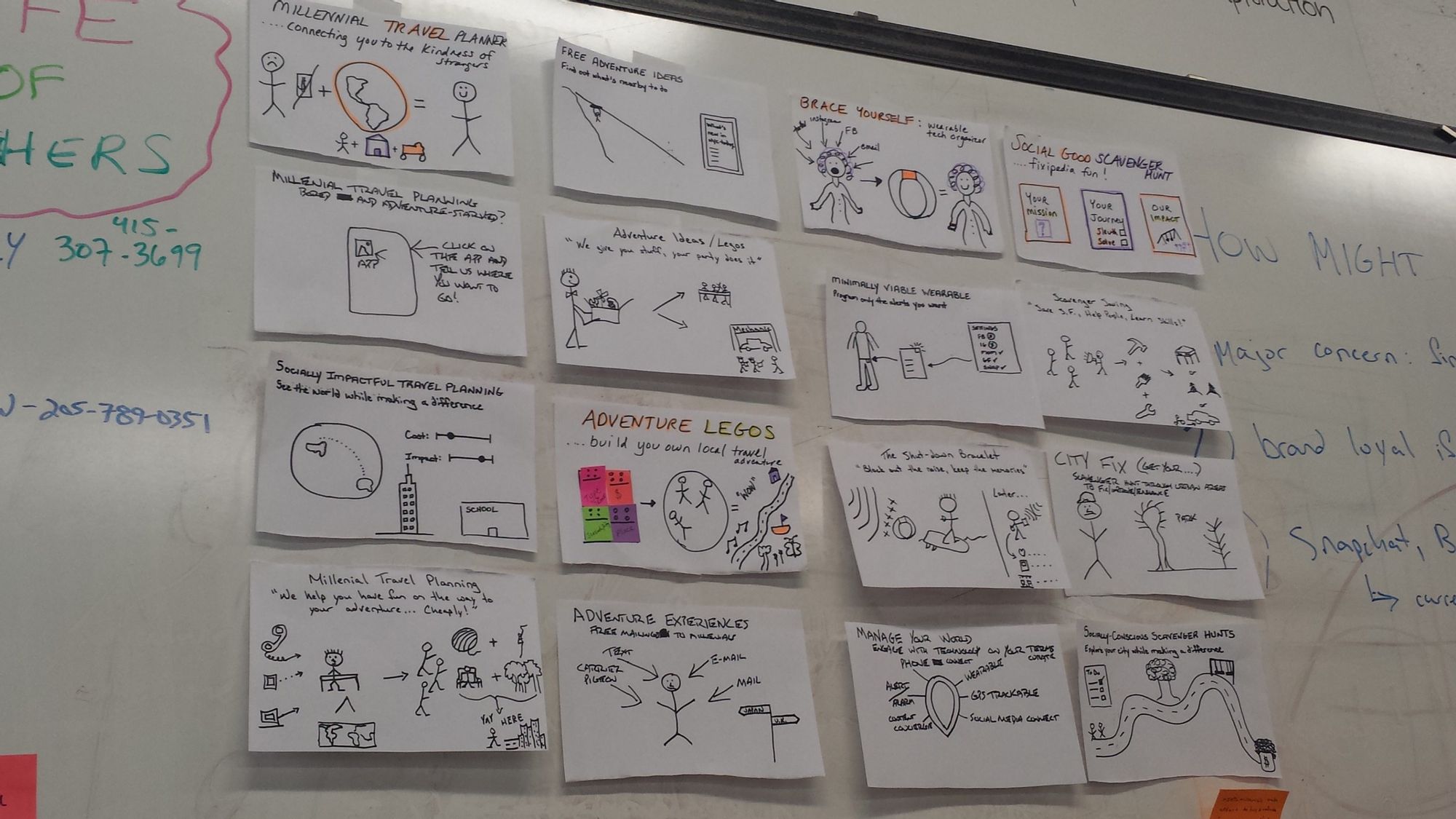Going to startup bootcamp made me uncomfortable.


Startups have always intrigued me. The passion, the resourcefulness, the risk and the potential reward.
But since I've always worked for large companies, I haven’t always had the opportunity to move through projects at lightning speed. Recently, I had the opportunity to step out of my element and immerse myself in the startup mindset.
I went to San Francisco to spend the week with Matter — a media startup accelerator — and participate in their design thinking bootcamp. To be clear, design thinking has little to do with the normal connotation of the word “design”. It’s not about aesthetics or visual design; it’s more of a thought process on developing products that is completely dedicated to solving a need for a user.
There were a few times during the week when I felt uncomfortable. And that meant it was working.
1. Getting Customers to Show Emotion
I've always prided myself on moving beyond a customer’s “want”. Many customers will tell you what they want, but there are often better solutions available than their suggestion. If you always directly respond to a “want”, your product will become an amalgam of all your disparate customers’ feature requests. For example, I might tell you I want some hot tea. But it’s not because I like tea. It’s actually because I’m cold. Had I articulated that I was cold, you might have chosen to bring me a warm blanket that I didn’t know was available, instead of giving me tea that I actually don’t like.
How does this happen? You interview your customers. You ask them to take you through their workflow, and you find opportunities in the white space to improve the product for them.
The design thinking process, however, helped me take this one step further: getting to a user’s emotion.
One of our first tasks was to go into the field with a brief to “design something useful and meaningful for a young millennial.” We were told to find millennials and talk to them. There was no product to ask feedback on, no deck to present. Rather, we were instructed to get them to tell us stories. Find out about their lives. Find out what they’re passionate about.

We took an Uber to Dolores Park in the Mission District and surveyed the park looking for millenials. This was part of the challenge: just find strangers and start talking to them.
We spotted Jeremy and Cara, two 21-year-old students, playing chess. We actually walked past them initially. They looked like they were having fun, and we didn't want to bother them. But we doubled back and decided to give it a shot. We ended up speaking with them for close to 15 minutes and learned about their lives, their backgrounds and their goals. The big “AHA moment” came when they told us about why they shut down all their social media accounts. They were tired of the superficial connections to their hundreds of “friends” and missed spending time focusing on their true, meaningful relationships. They hated that every time they had an adventure and wanted to tell their friends about it, the response would be “Oh yeah, I saw those pictures on Instagram already.”
For the next three days, Jeremy and Cara’s stories were on my mind (plus their picture was taped to our white board). They were our muses in trying to build a product or experience that was less about technology and more about human connection. I was clear beyond a doubt who my user was and for whom I was solving a problem. It wasn’t just Jeremy and Cara. It was all the Jeremy’s and Cara’s out there.
2. Brainstorming. Then brainstorming some more.
I’ve been through — and led — plenty of brainstorming sessions over the years. This one was different though. We were told we were going to run through a brainstorming exercise. Man, I already had two great ideas. I was stoked. And then we were told “come up with at least 50 ideas. But really shoot for 100.”
Suddenly, we had to throw caution to the wind and blurt out ideas like it was a game of Pictionary. Before we knew it we had five, then ten, then twenty, then about seventy ideas. Some were awful, some were impossible, but some were pretty decent. But it was probably the first time I ever brainstormed with a complete disregard for constraints.
3. Building a prototype. FAST.
A prototype is a great way of testing your assumptions before you invest all your time and money building something. But sometimes a prototype can feel like it takes just as long to build as the final product.
Many times, teams will try to refine a prototype to be the best possible representation of the final product or of the brand. They’re afraid to release something into the market that isn't almost perfect. I've certainly been there before.

Rather than spending weeks writing requirements, putting together project plans, briefing development teams, organizing resources and training sales teams, we took pen to paper and sketched out ideas. Literally. We brought the ideas onto the street and got feedback.
We did this in about 90 minutes.
Doing this in such a quick amount of time helped me understand the concept of “being scrappy” and working with the resources that you have. Execution doesn’t need to be perfect, as long as you’re able to articulate your vision and get feedback.
In our final debrief, we talked about how large organizations won’t immediately uproot themselves and become nimble startups. They shouldn’t. But by utilizing the three tactics above, I’ve already found small ways to integrate a quicker and more customer-centric approach into everyday work. In particular, I’ve found it refreshing to throw aside pricing and resourcing constraints and complications, and just focus on the customer need for a few of my in-flight projects.

